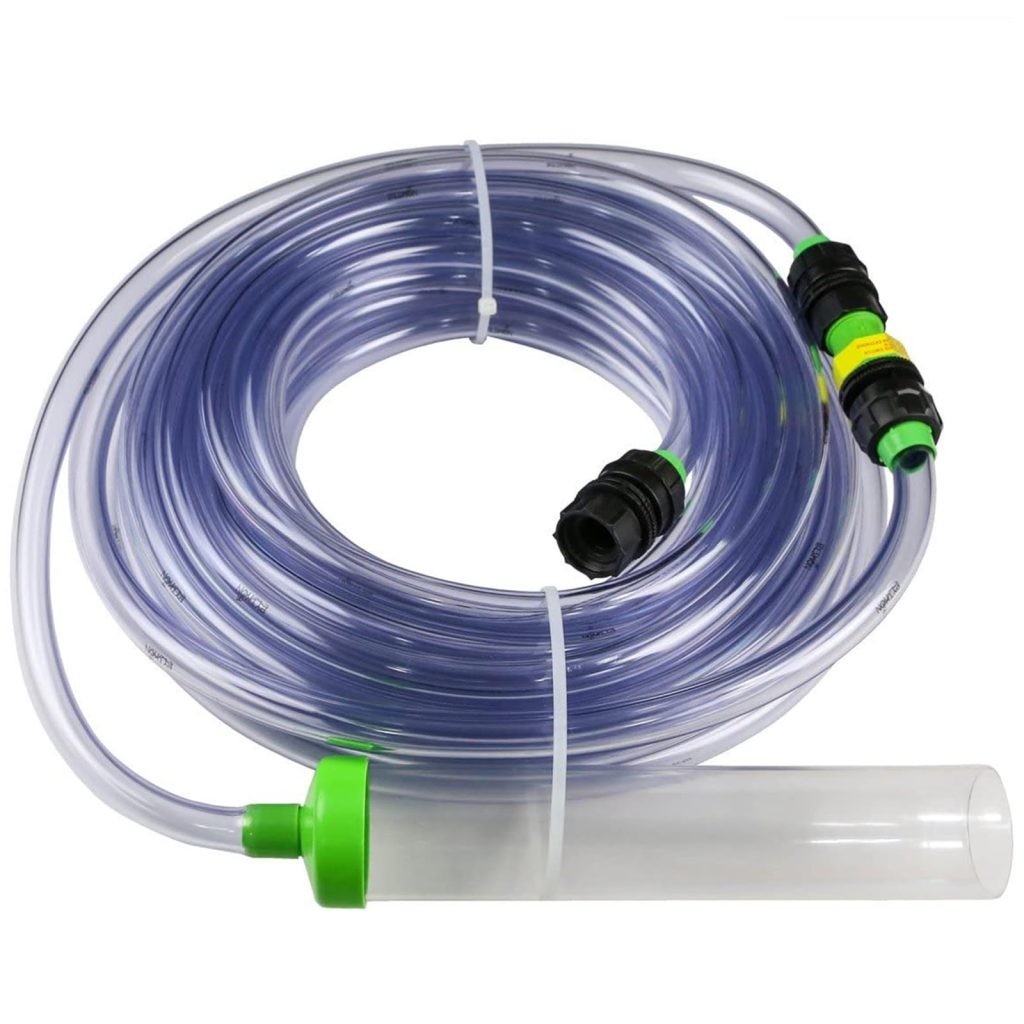
Python, like many other programming languages, employs various optimization techniques to imropve performance. One such technique is the use of a type cache. The type cache is an internal mechanism that Python uses to store and quickly retrieve information about object types, improving the speed of type-related operations.
In Python, every object has a type, and the interpreter frequently needs to check these types during program execution. Instead of determining the type of an object from scratch each time, Python caches this information for rapid access. This caching mechanism significantly reduces the computational overhead associated with type checking and method resolution.
The type cache is particularly useful in scenarios where:
- The same types are used repeatedly
- There are complex inheritance hierarchies
- Polymorphic code is extensively used
To illustrate the concept of type caching, ponder the following example:
class MyClass:
pass
obj = MyClass()
# First type check
print(type(obj))
# Subsequent type checks (faster due to caching)
print(type(obj))
print(type(obj))
In this example, the first call to type(obj) might involve more computation to determine the object’s type. However, subsequent calls benefit from the cached information, resulting in faster execution.
It is important to note that the type cache is an implementation detail of CPython (the reference implementation of Python) and may not be present or function identically in other Python implementations. The cache is managed automatically by the Python interpreter, and in most cases, developers don’t need to interact with it directly.
However, there are situations where manually clearing the type cache can be beneficial, especially in certain testing scenarios or when dealing with dynamic type changes. This is where the sys._clear_type_cache() function comes into play, which we’ll explore in more detail in the following sections.
Understanding the Role of sys._clear_type_cache
The sys._clear_type_cache() function is a low-level tool provided by Python’s sys module to manually clear the type cache. This function is typically used in specific scenarios where the automatic type caching mechanism needs to be reset.
When you call sys._clear_type_cache(), it flushes the internal type lookup cache, forcing Python to rebuild it as needed. This can be particularly useful in situations where you are dealing with dynamic type changes or conducting performance testing.
Here’s an example of how to use sys._clear_type_cache():
import sys
# Some code that populates the type cache
class MyClass:
pass
obj = MyClass()
print(type(obj))
# Clear the type cache
sys._clear_type_cache()
# After clearing, the next type check might be slightly slower
print(type(obj))
It’s important to note that sys._clear_type_cache() is considered an implementation detail and is not part of Python’s public API. This means that its behavior may change between Python versions or implementations without notice. Therefore, it should be used with caution and only when absolutely necessary.
The function primarily affects the following areas:
- Clearing the cache can impact the speed of method lookups, especially in complex inheritance hierarchies.
- Operations that involve type checking, such as
isinstance()calls, may be slower immediately after clearing the cache. - The first attribute access after clearing the cache might be slower as Python needs to rebuild the attribute lookup information.
To demonstrate the potential impact on performance, consider the following example:
import sys
import time
class A:
def method(self):
pass
def measure_time(func, iterations=1000000):
start = time.time()
for _ in range(iterations):
func()
return time.time() - start
# Create an instance and warm up the cache
obj = A()
obj.method()
# Measure time with cached type information
time_cached = measure_time(lambda: obj.method())
print(f"Time with cached type info: {time_cached:.6f} seconds")
# Clear the type cache
sys._clear_type_cache()
# Measure time immediately after clearing the cache
time_cleared = measure_time(lambda: obj.method())
print(f"Time after clearing cache: {time_cleared:.6f} seconds")
In this example, you might observe a slight increase in execution time immediately after clearing the cache. However, the difference is usually minimal and the cache will be rebuilt as the program continues to run.
While sys._clear_type_cache() can be a powerful tool in certain situations, it is crucial to use it judiciously. In most everyday Python programming, you won’t need to interact with the type cache directly. The Python interpreter manages it efficiently, and manual intervention is rarely necessary.
Reasons for Clearing the Type Cache
There are several reasons why a Python developer might need to clear the type cache using sys._clear_type_cache(). Understanding these reasons can help you determine when it is appropriate to use this function in your code:
- When writing tests for code that involves dynamic type changes or metaclasses, clearing the type cache can help ensure that each test runs in a clean state, unaffected by previous type caching.
- To accurately measure the performance of type-related operations, you might want to clear the cache to get consistent results across multiple runs.
- In long-running applications with frequent dynamic type creation and deletion, clearing the type cache periodically can help manage memory usage.
- If your code involves modifying class hierarchies or changing object types at runtime, clearing the cache can ensure that these changes are immediately reflected in subsequent type checks.
Let’s explore some examples to illustrate these scenarios:
1. Testing with Dynamic Type Changes:
import sys
import unittest
class DynamicTypeTest(unittest.TestCase):
def setUp(self):
sys._clear_type_cache() # Clear cache before each test
def test_dynamic_type_change(self):
class A:
pass
obj = A()
self.assertIsInstance(obj, A)
# Dynamically change the type of obj
class B:
pass
obj.__class__ = B
self.assertIsInstance(obj, B)
if __name__ == '__main__':
unittest.main()
2. Performance Benchmarking:
import sys
import time
def benchmark_type_check(iterations=1000000):
class A:
pass
obj = A()
sys._clear_type_cache() # Ensure a clean state
start_time = time.time()
for _ in range(iterations):
isinstance(obj, A)
end_time = time.time()
return end_time - start_time
print(f"Time taken: {benchmark_type_check():.6f} seconds")
3. Memory Management in Long-Running Applications:
import sys
import gc
def long_running_process():
while True:
# Perform operations that create and delete many types
for _ in range(10000):
type('DynamicClass', (), {})
# Periodically clear type cache and run garbage collection
sys._clear_type_cache()
gc.collect()
# Rest of the long-running process...
# Note: That's a simplified example. In practice, you'd need to
# carefully ponder when and how often to clear the cache.
4. Handling Runtime Type Modifications:
import sys
class A:
def method(self):
return "Method from A"
obj = A()
print(obj.method()) # Output: Method from A
# Modify the class at runtime
A.method = lambda self: "Modified method"
# Clear type cache to ensure the modification is immediately visible
sys._clear_type_cache()
print(obj.method()) # Output: Modified method
While these examples demonstrate valid use cases for clearing the type cache, it is crucial to remember that indiscriminate use of sys._clear_type_cache() can negatively impact performance. The Python interpreter’s default caching behavior is generally optimal for most scenarios, and manual cache clearing should be used sparingly and only when necessary.
Step-by-Step Guide on Using sys._clear_type_cache
Now that we understand the purpose and potential use cases for sys._clear_type_cache(), let’s go through a step-by-step guide on how to use it effectively in your Python programs:
Step 1: Import the sys module
Before you can use sys._clear_type_cache(), you need to import the sys module:
import sys
Step 2: Call sys._clear_type_cache()
To clear the type cache, simply call the function:
sys._clear_type_cache()
Step 3: Consider the timing
It is important to call sys._clear_type_cache() at the appropriate time in your code. For example, if you are using it in a test suite, you might want to clear the cache before each test:
import unittest
import sys
class MyTestCase(unittest.TestCase):
def setUp(self):
sys._clear_type_cache()
# Other setup code...
def test_something(self):
# Your test code here...
Step 4: Be aware of performance implications
Remember that clearing the type cache can have a temporary performance impact. If you’re clearing the cache in a performance-sensitive part of your code, you might want to measure the impact:
import time
def measure_execution_time(func):
start_time = time.time()
func()
end_time = time.time()
return end_time - start_time
def my_function():
# Some code that uses type checking...
pass
# Measure execution time without clearing cache
time_without_clear = measure_execution_time(my_function)
# Measure execution time with clearing cache
def function_with_clear():
sys._clear_type_cache()
my_function()
time_with_clear = measure_execution_time(function_with_clear)
print(f"Time without clearing cache: {time_without_clear:.6f} seconds")
print(f"Time with clearing cache: {time_with_clear:.6f} seconds")
Step 5: Use in conjunction with other tools
In some cases, you might want to use sys._clear_type_cache() along with other Python tools. For example, when dealing with memory management, you might use it with the garbage collector:
import gc
def cleanup():
sys._clear_type_cache()
gc.collect()
# Use this function periodically in long-running applications
Step 6: Handle potential AttributeError
Since sys._clear_type_cache() is an implementation detail, it might not be available in all Python implementations. To handle this, you can use a try-except block:
def safe_clear_type_cache():
try:
sys._clear_type_cache()
except AttributeError:
print("sys._clear_type_cache() is not available in this Python implementation")
safe_clear_type_cache()
Step 7: Document usage
If you are using sys._clear_type_cache() in a project, especially one that others might work on, it’s important to document why you’re using it. Add comments explaining the reason for clearing the cache:
# Clear the type cache to ensure consistent behavior # when dynamically modifying class hierarchies sys._clear_type_cache()
By following these steps, you can effectively use sys._clear_type_cache() in your Python programs while being mindful of its implications and potential pitfalls.
Best Practices for Managing Type Cache in Python
When working with Python’s type cache and the sys._clear_type_cache() function, it’s important to follow best practices to ensure optimal performance and maintainability of your code. Here are some key guidelines to consider:
- Only clear the type cache when absolutely necessary. The Python interpreter manages the cache efficiently in most cases, and frequent clearing can negatively impact performance.
- If you need to clear the cache, do so in isolated environments such as individual test cases or specific functions, rather than clearing it globally.
- Always measure the performance impact of clearing the type cache in your specific use case. This will help you determine if the benefits outweigh the potential performance cost.
- Clearly comment why you’re clearing the type cache in your code to help other developers (including your future self) understand the reasoning behind this decision.
- Before resorting to clearing the type cache, consider if there are other ways to achieve your goal, such as redesigning your code to avoid dynamic type changes.
- sys._clear_type_cache() is particularly useful in testing scenarios. Think incorporating it into your test setup methods to ensure a clean slate for each test.
- Remember that sys._clear_type_cache() is specific to CPython. If your code needs to run on other Python implementations, provide fallback mechanisms.
Here’s an example that demonstrates some of these best practices:
import sys
import time
import unittest
def benchmark(func):
def wrapper(*args, **kwargs):
start_time = time.time()
result = func(*args, **kwargs)
end_time = time.time()
print(f"{func.__name__} execution time: {end_time - start_time:.6f} seconds")
return result
return wrapper
class TypeCacheTest(unittest.TestCase):
def setUp(self):
# Clear type cache before each test
self.safe_clear_type_cache()
@staticmethod
def safe_clear_type_cache():
try:
sys._clear_type_cache()
except AttributeError:
print("Warning: sys._clear_type_cache() not available")
@benchmark
def test_dynamic_type_change(self):
class A:
pass
obj = A()
self.assertIsInstance(obj, A)
# Dynamically change the type
class B:
pass
obj.__class__ = B
self.assertIsInstance(obj, B)
@benchmark
def test_without_cache_clear(self):
# This test doesn't clear the cache, for comparison
class C:
pass
obj = C()
self.assertIsInstance(obj, C)
if __name__ == '__main__':
unittest.main()
In this example, we’ve incorporated several best practices:
- We clear the type cache only in the setUp method of our test case, ensuring a clean state for each test without affecting the entire application.
- We’ve created a safe_clear_type_cache method that handles the potential absence of sys._clear_type_cache() in some Python implementations.
- We use a benchmark decorator to measure and compare the performance of our tests with and without cache clearing.
- The usage of sys._clear_type_cache() is isolated to the testing environment, where its impact is controlled and measurable.
By following these best practices, you can effectively manage Python’s type cache while minimizing potential negative impacts on your application’s performance and portability.






